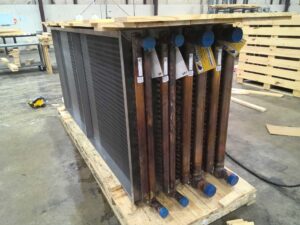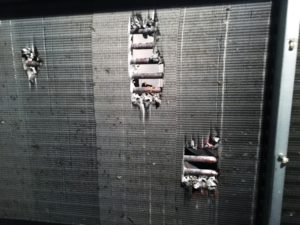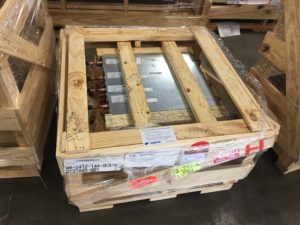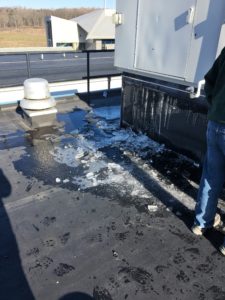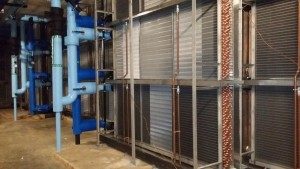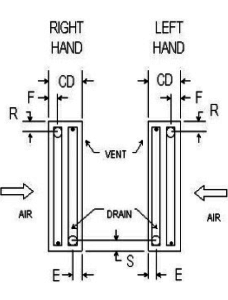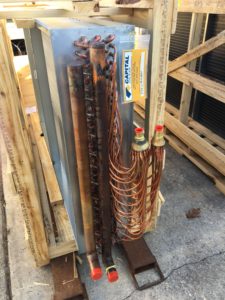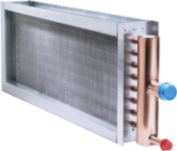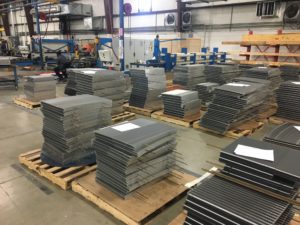 It’s really not a coincidence why HVAC coils use copper tubes and aluminum fins. Copper is great for heat transfer, and aluminum – while still very effective -is simply not as good. The first goal of any HVAC coil is to cool or heat. Heat transfer is always the first consideration. Cost is the second. Copper works well for the tubes, but would be prohibitive for the fins. You would need a compelling reason for the fins to be copper, and sometimes there are reasons to do just that. However, the vast majority of HVAC coils that you see are built with copper tubes and aluminum fins. That combination offers the most effective heat transfer at the most efficient cost.
It’s really not a coincidence why HVAC coils use copper tubes and aluminum fins. Copper is great for heat transfer, and aluminum – while still very effective -is simply not as good. The first goal of any HVAC coil is to cool or heat. Heat transfer is always the first consideration. Cost is the second. Copper works well for the tubes, but would be prohibitive for the fins. You would need a compelling reason for the fins to be copper, and sometimes there are reasons to do just that. However, the vast majority of HVAC coils that you see are built with copper tubes and aluminum fins. That combination offers the most effective heat transfer at the most efficient cost.
To begin, fins are responsible for a surprising 65% – 70% of the heat transfer on any coil, while tubes are responsible for the remaining 30% – 35%. Additionally, in order for your coil to work at optimum performance, you need to have a terrific fin/tube bond. Fins are known as secondary surface, while tubes are referred to as primary surface. While this may seem counterintuitive, the secondary surface is responsible for twice the amount of heat transfer as the primary surface.
The tubes are expanded into the fins, and for that reason, the fins become secondary. As mentioned above, the fins are responsible for 65% – 70% of all heat transfer that takes place in the HVAC coil. When you think about it logically, it really makes sense. At 8 fins/inch or 10 fins/inch, and with fins that run the height and depth of the coil, there is much more fin surface than tube surface. However, it also points out how good the fin/tube bond must be in the expansion process. Without that bond, the fins cannot perform their job.
Understanding the role and importance of the materials used in HVAC coils cannot be overstated. There is a distinct reason why the vast majority of coils are constructed using these materials. While coils can be built with other tube materials, such as steel, 304/316 stainless steel, 90/10 cupro-nickel, as well as various different fin materials, none of these are as efficient or economical as copper/aluminum.
Capital Coil & Air is here to help you with any and all coil selections, and we look forward to working with you on your next project.
